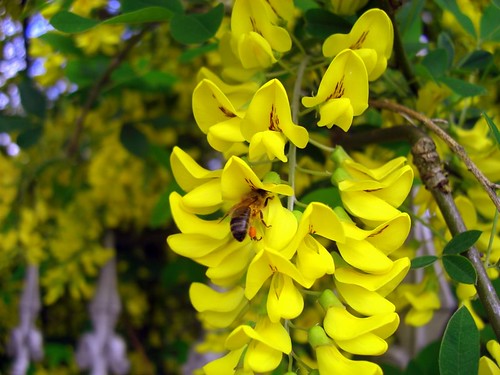REDWOOD
Queen Bee
- Joined
- Oct 17, 2009
- Messages
- 8,381
- Reaction score
- 93
- Location
- swansea south wales
- Hive Type
- 14x12
- Number of Hives
- 10
Do bees forage on buttercups as there seems to be lots of it about this year

I've done a bit of searching and it seems that they will collect pollen from buttercups and the bees look all yellow and I noticed a few bees all yellow today
Not my camera for the last two but if you are looking for a good setup buy a DSLR with a 90mm true macro lensExcellent photos Mr. Redwood. What camera, please?
Thanks,
Waxing
Same here, rowan just started to flower and hawthorn not quite yet, I too had bees with bright orange almost florescent pollen, I did a search for source but the only thing that was in full flower was buttercups bluebells horse chestnut and Rhododendron, hazel has also flowered.
Hmm....for the can't-reach-between-the shoulder-blades look think pea family or sage family...obviously very free with the pollen by the state of them!
Hmm....for the can't-reach-between-the shoulder-blades look think pea family or sage family...obviously very free with the pollen by the state of them!

I thought magnolias didn't have pollen and nectar as they're prehistoric and pre-date pollinators.
Have you got any broom near you?
Do bees forage on buttercups as there seems to be lots of it about this year
Enter your email address to join: